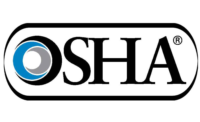The proposed amendments published by the California Occupational Safety and Health Standards Board would revise the requirements of Section 3395 by:
(1) Specifying that drinking water must be provided at no cost and be fresh, pure, suitably cool and located within 400 feet unless prohibited by site conditions.
(2) Requiring that shade be present when the temperature exceeds 80 degrees F, be sufficient to accommodate all employees on break, and be located within 700 feet of employees unless that is not feasible.
(3) Requiring that an employee taking a cool-down rest be encouraged to remain in the shade until symptoms have abated and be monitored by the employer during this recovery period.
(4) Lowering the threshold temperature for initiating high heat procedures from 95 degrees F to 85 degrees F.
(5) Specifying that high heat procedures include the means for observing employees for signs and symptoms of heat illness, designation of an employee at the worksite who is authorized to call for emergency medical services, and a pre-shift meeting to cover high heat precautions.
(6) Requiring a net ten-minute recovery period (which may be concurrent with other required breaks) for every two hours that an employee in agriculture works continuously in temperatures equal to or exceeding 95 degrees F.
(7) Specifying that workers receive additional training on the right to exercise their rights under the heat illness standard without fear of retaliation, procedures for acclimatization, and appropriate first aid and emergency response to heat illness.
(8) Adding new elements to the required written heat illness prevention procedures, which would now be called a heat illness prevention plan.
(9) Requiring that supervisors take immediate action if an employee exhibits symptoms of heat illness and prohibiting an employer from sending home an employee who was exhibiting signs or symptoms of heat illness without first offering onsite first aid or providing emergency medical services.

